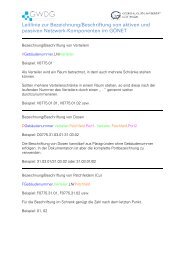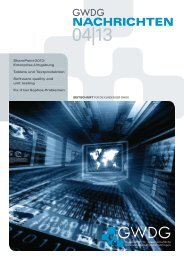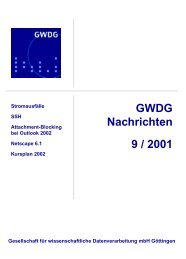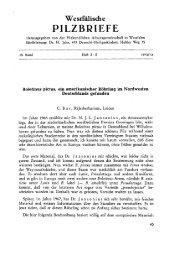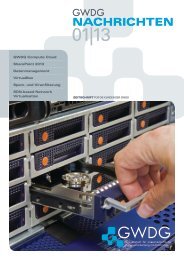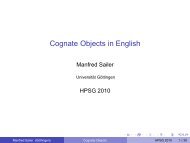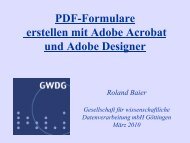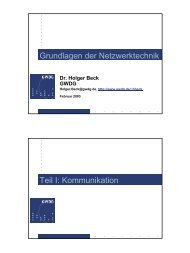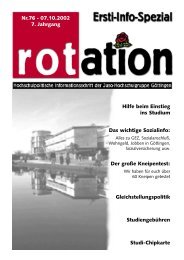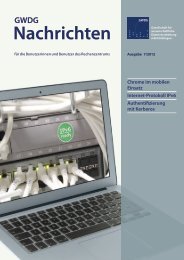Forschung und wissenschaftliches Rechnen - Beiträge zum - GWDG
Forschung und wissenschaftliches Rechnen - Beiträge zum - GWDG
Forschung und wissenschaftliches Rechnen - Beiträge zum - GWDG
Erfolgreiche ePaper selbst erstellen
Machen Sie aus Ihren PDF Publikationen ein blätterbares Flipbook mit unserer einzigartigen Google optimierten e-Paper Software.
Fig. 6: Selecting a chemical equation set and a numerical solver for KPP. See Sect. 4.15 for<br />
further details.<br />
4.14 MADE<br />
MAINTAINER: Axel Lauer (DLR)<br />
ORIGINAL CODE: Ingmar Ackermann et al. (FFA)<br />
DESCRIPTION: The Modal Aerosol Dynamics model for Europe (MADE)<br />
has been developed by Ackermann et al. (1998) as an extension to mesoscale<br />
chemistry transport models to allow a more detailed treatment of aerosol effects<br />
in these models. In MADE, the particle size distribution of the aerosol<br />
is represented by overlapping lognormal modes. Sources for aerosol particles<br />
are modelled through nucleation and emission. Coagulation, condensation,<br />
and deposition are considered as processes modifying the aerosol population<br />
in the atmosphere. The adaptation of MADE to the MESSy standard is currently<br />
<strong>und</strong>er construction.<br />
4.15 MECCA<br />
MAINTAINER: Rolf Sander, Astrid Kerkweg<br />
CONTRIBUTIONS: Rolf von Kuhlmann, Benedikt Steil, Roland von Glasow<br />
DESCRIPTION: The Module Efficiently Calculating the Chemistry of the<br />
Atmosphere (MECCA) by Sander et al. (2005) calculates tropospheric and<br />
stratospheric chemistry. Aerosol Chemistry in the marine bo<strong>und</strong>ary layer is<br />
also included. The main features of MECCA are:<br />
23



